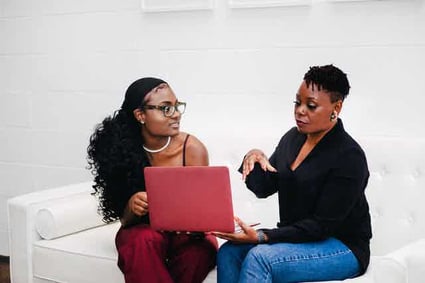Leadership for Cultivating a Generative Culture
 At LINC we strive to develop a culture of generativity. Generative humans are adaptable, creative problem solvers and are active collaborators and innovators in this rapidly changing world, full of uncertainty.
At LINC we strive to develop a culture of generativity. Generative humans are adaptable, creative problem solvers and are active collaborators and innovators in this rapidly changing world, full of uncertainty.
We believe generativity is the single most important skill our students need in order to thrive.
It is not an easy task to cultivate generativity in students. As educators, we need to make great shifts in our own mindsets and practices to model this for our students. This work involves revising and reflecting upon our mental models, adopting new beliefs, behaviors, and ways of being. To succeed in building a generative culture, we need teachers and leaders to work together in a manner that fosters trust, equity, risk taking, agency, and collaboration..
As an educational leader, I have learned that sometimes even though we act with the most positive intentions, we do not always achieve the best outcomes with our teams. In my experience, being empathetic and offering solutions has not always fostered teacher agency. Sometimes by sharing my innovative ideas to stimulate their thinking, it has impeded them to take risks and unleash their own ideas.
I didn't realize this until my participation in our last LINC Summit, where we took a quiz about our leadership style. Was I a multiplier or was I an accidental diminisher? And to my surprise, most of my qualities resemble those of an accidental diminisher rather than a multiplier. This means I was unintentionally diminishing the people I lead.

I have to confess that I felt frustrated by this result. However, my most essential learning from this experience was the critical importance of changing my leadership style to create a culture of generativity within my team that can lead to real transformation.
Since then, I have been striving each day to shift my leadership style to that of a multiplier. I have engaged in the following activities to become a leader that fosters a generative culture among the educators on my team:
- Develop talent by providing the members of my team equitable professional development opportunities
- Explore learning from mistakes instead of placing blame to encourage risk taking
- Challenge the team to develop solutions, instead of telling them what to do and providing the answers, which encourages agency
- Consult with the team on decisions, instead of making decisions myself, to promote collaboration
- Support the team, instead of controlling them, to promote trust
Liz Wiseman, in her book Multipliers: How the Best Leaders Make Everyone Smarter asserts that “Becoming a Multiplier often starts with becoming less of a Diminisher […] this usually means doing less: less talking, less responding, less convincing, and less rescuing of others who need to struggle and learn for themselves. By doing less, we can become more of a Multiplier.”
 Other tips that have helped me in my own journey are:
Other tips that have helped me in my own journey are:
- Seeking feedback
- Admitting my mistakes
- Listening to learn
- Leading with intention
- Challenging more
- Assuming positive intent
- Addressing one issue at a time
- Celebrating progress
If you are an education leader, I encourage you to create school cultures where you boost individual team members’ capacity and capability. This will lead to a more generative faculty, who will in turn create generative students by modeling generative behaviors. I encourage you to visit this link and explore your leadership type and how you can improve it. If you have any feedback, I can be reached at sandranoguera@linclearning.com or on Twitter at @slnoguera.
“If you want to build a ship, don’t drum up the men to gather wood, divide the work and give orders… Instead, teach them to yearn for the vast and endless sea.”
Antoine De Saint-Exupery